Prices

October 5, 2018
License Data Shows Decline in Rolled Steel Imports
Written by Peter Wright
Rolled product imports into the United States were down by 21.6 percent in September on a three-month moving average basis compared with the prior year, according to Steel Market Update’s latest analysis of import license data.
Figure 1 shows the tonnage of total rolled steel and semi-finished imports through September on a 3MMA basis. The effect of Section 232 tariffs is not so obvious, especially as far as rolled products are concerned.
Except for early 2016, the import volume of semis has ranged between 500,000 and a million tons per month for the last seven years. It’s true to say that if we consider mid-2014 through today, the volume of semis has trended down. It’s also true that since early 2016, it has trended up. It seems fairly clear that the tariffs have had no effect on the import volume of semis.
The volume of total rolled products in 2017 peaked in June and the year ended down 1.3 percent from where it began. The decline continued through February 2018, surged again through May, and declined each month June through August with a very slight increase in September. On a 3MMA basis, September was down by 14.4 percent from June. In our opinion, it is still too soon to conclude that this was due to the tariffs. We need a few more months of data to reach that conclusion.
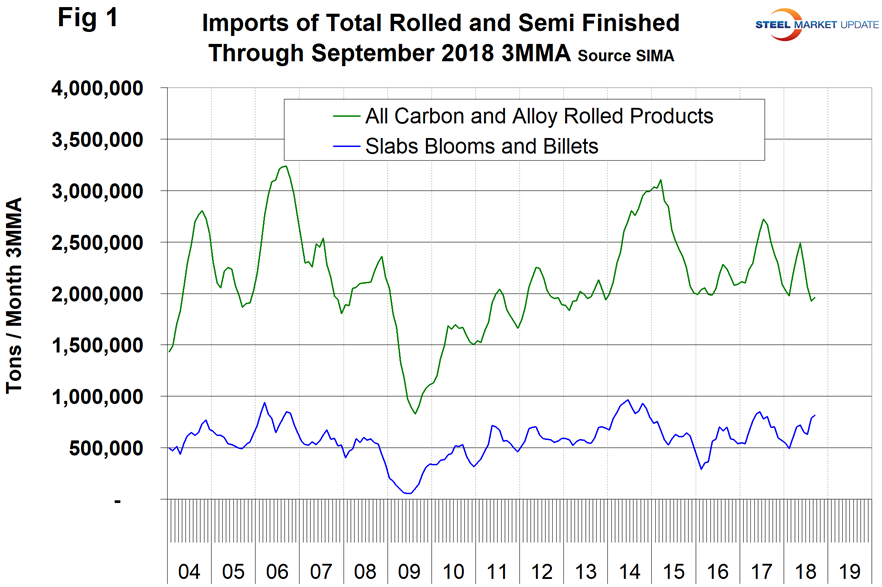
Beginning in January 2018, we have expanded this import analysis to include all major steel sectors: sheet, plate, longs and tubulars, with a total of 18 subsectors, and we now publish an import market share analysis for the same 18 steel product groups. Together, these two reports should give an accurate view of the effect of the Section 232 trade legislation as 2018 comes to a close. All volumes in this analysis are reported in short tons. We use three-month moving averages rather than single-month results to smooth out the variability.
There are three tables in this report. In each of them we show the 3MMA of the tonnage in September 2018 and 2017 with the year-over-year change. We then calculate the percentage change in volume in the most recent three months with the previous three months. This month we are comparing July/ August/September with April/May/June (3M/3M). The next column to the right shows the year-over-year change as a percentage. Declines are color coded green and increases are coded red. Finally, in the far-right column, we subtract the 12-month change from the three-month change. This is a way of describing the magnitude of the recent trend as a percentage. It is not unusual for the color code of the trend to be the opposite of the two time frame analyses.
Table 1 describes the imports of all major sectors of the sheet and plate markets. In the flat rolled sectors shown in Table 1, all sheet and plate products except hot rolled and tin plate had decreasing imports 3M/3M, and all except hot rolled and coiled plate decreased year over year. Figures 2 and 3 show the history of sheet and plate product imports since January 2004.
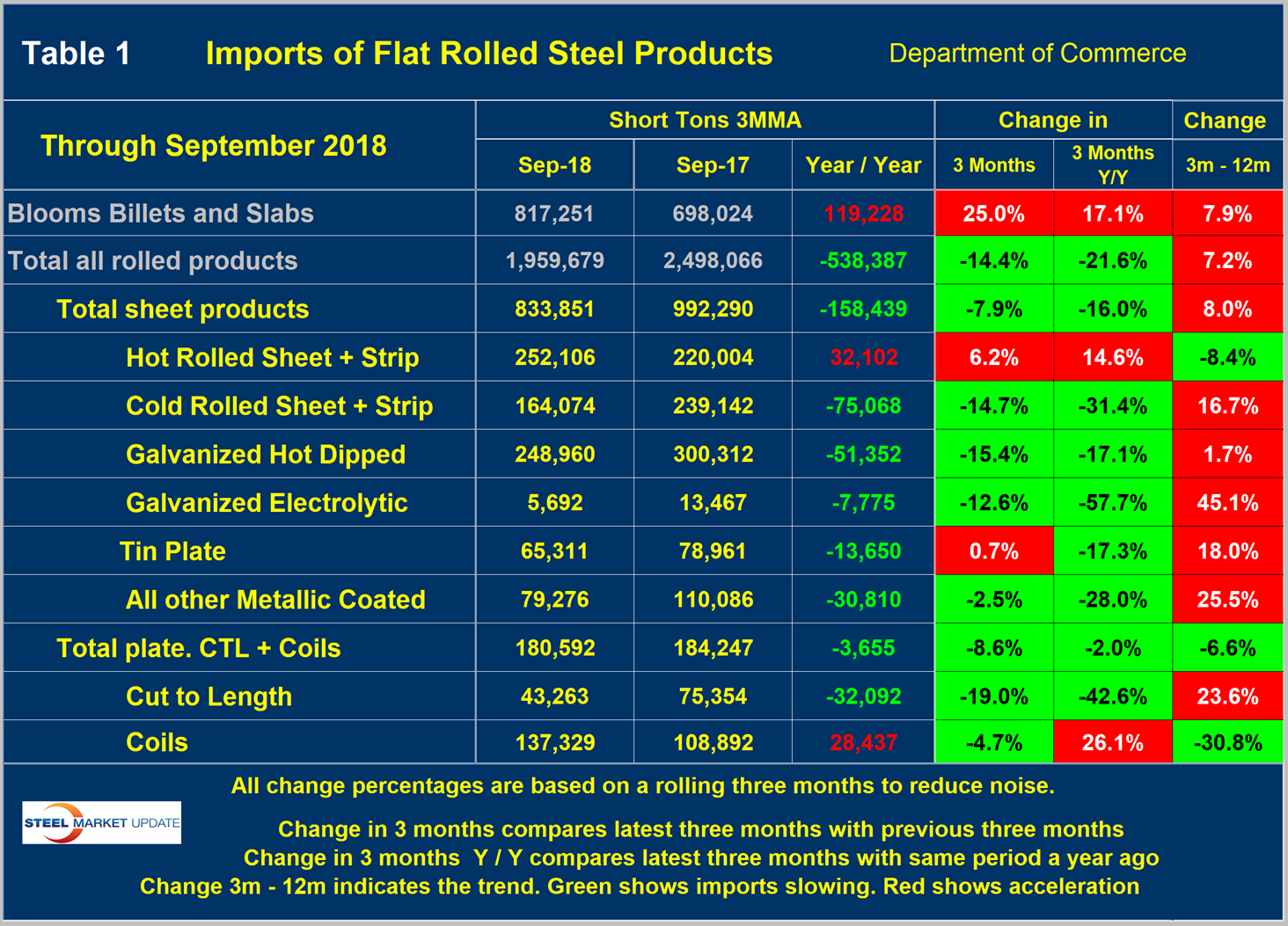
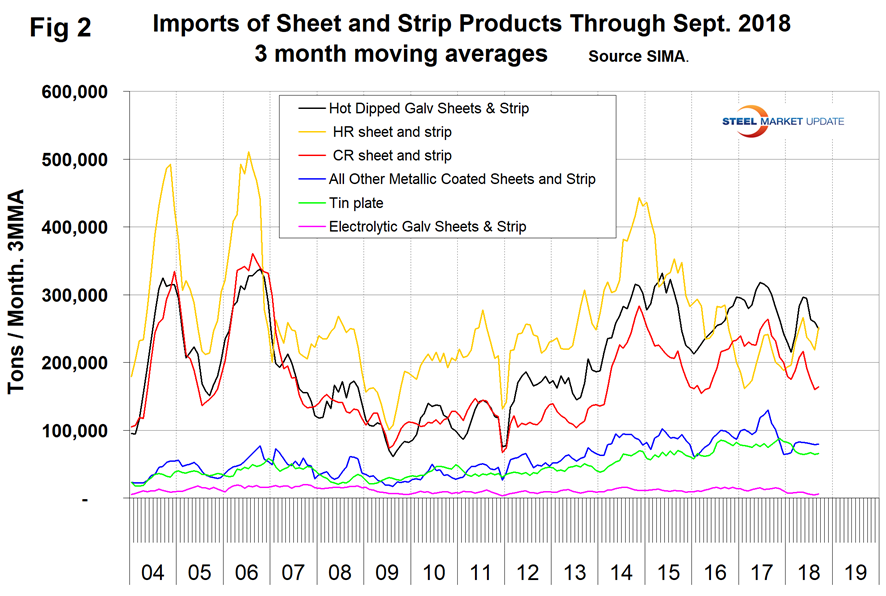
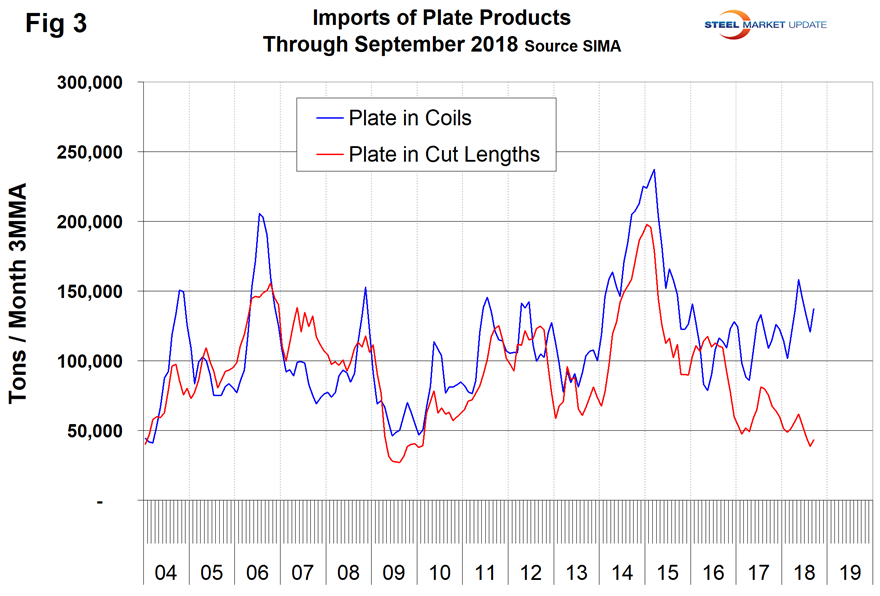
Table 2 shows the same analysis for long products where 3M/3M imports were down by 19.0 percent and down by 19.1 percent year over year. Figure 4 shows the history of long product imports.
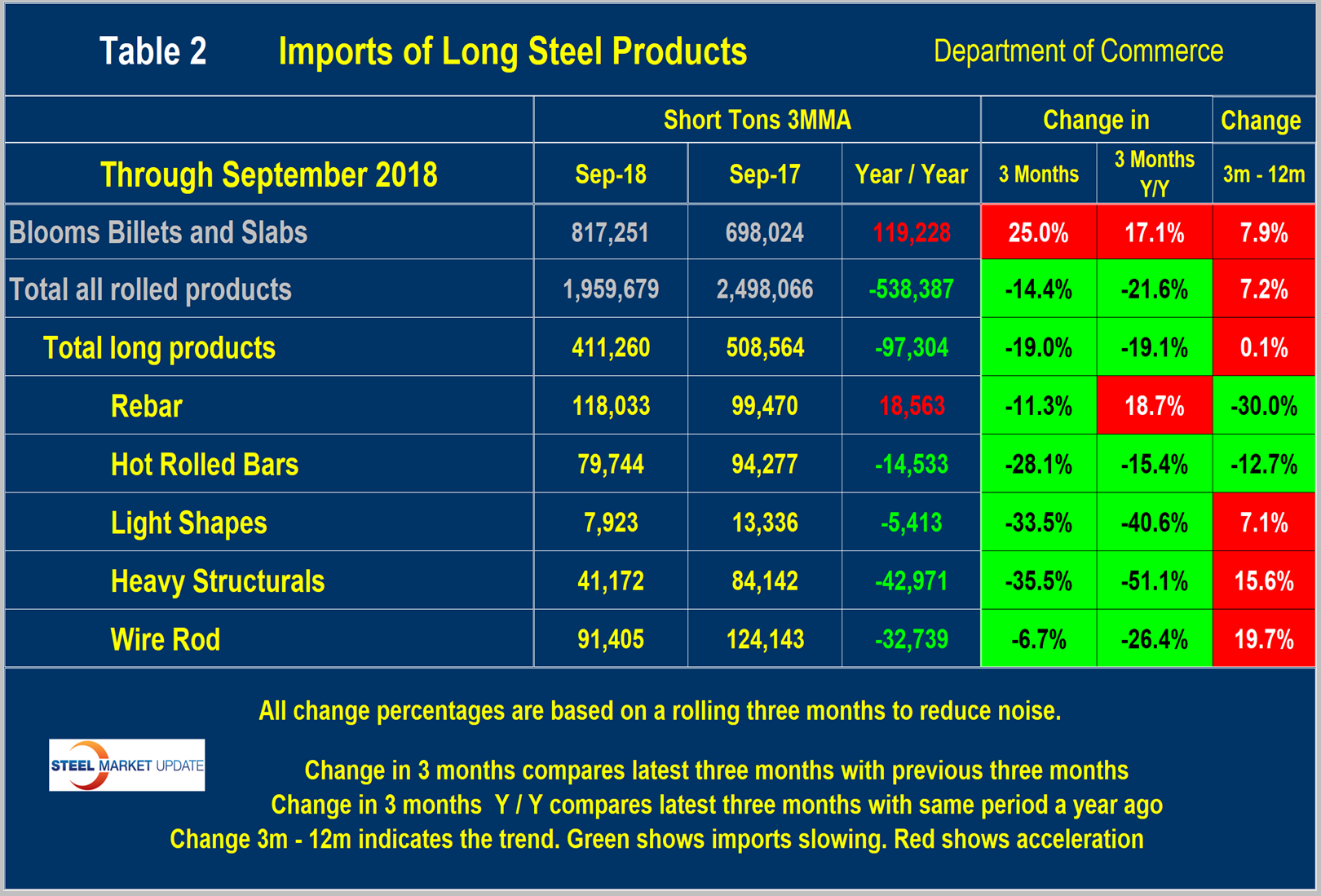
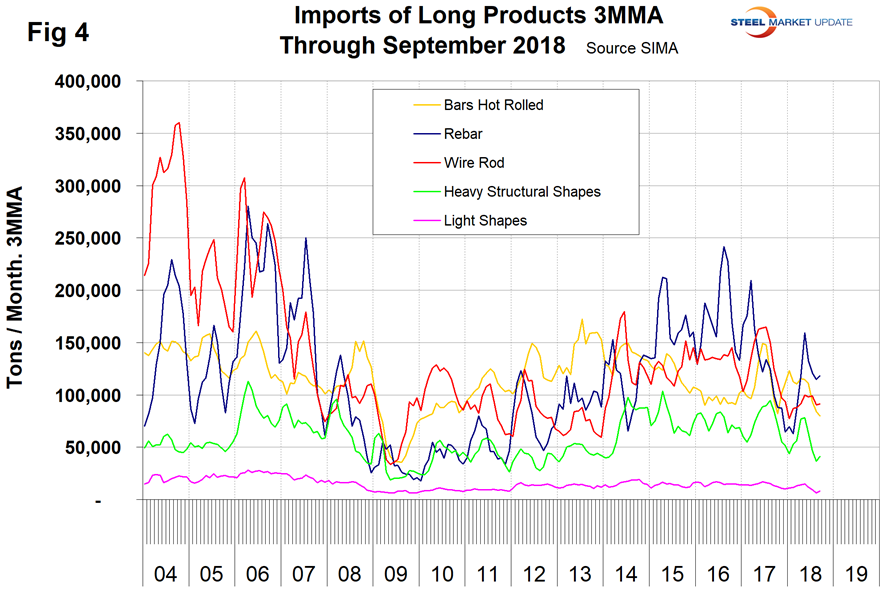
Table 3 shows that for tubular products the 3M/3M volume was down by 20.7 percent and the year-over-year volume was down by 33.2 percent. All individual products were down in both time frames. Figure 5 shows the history of tubular imports since 2004.
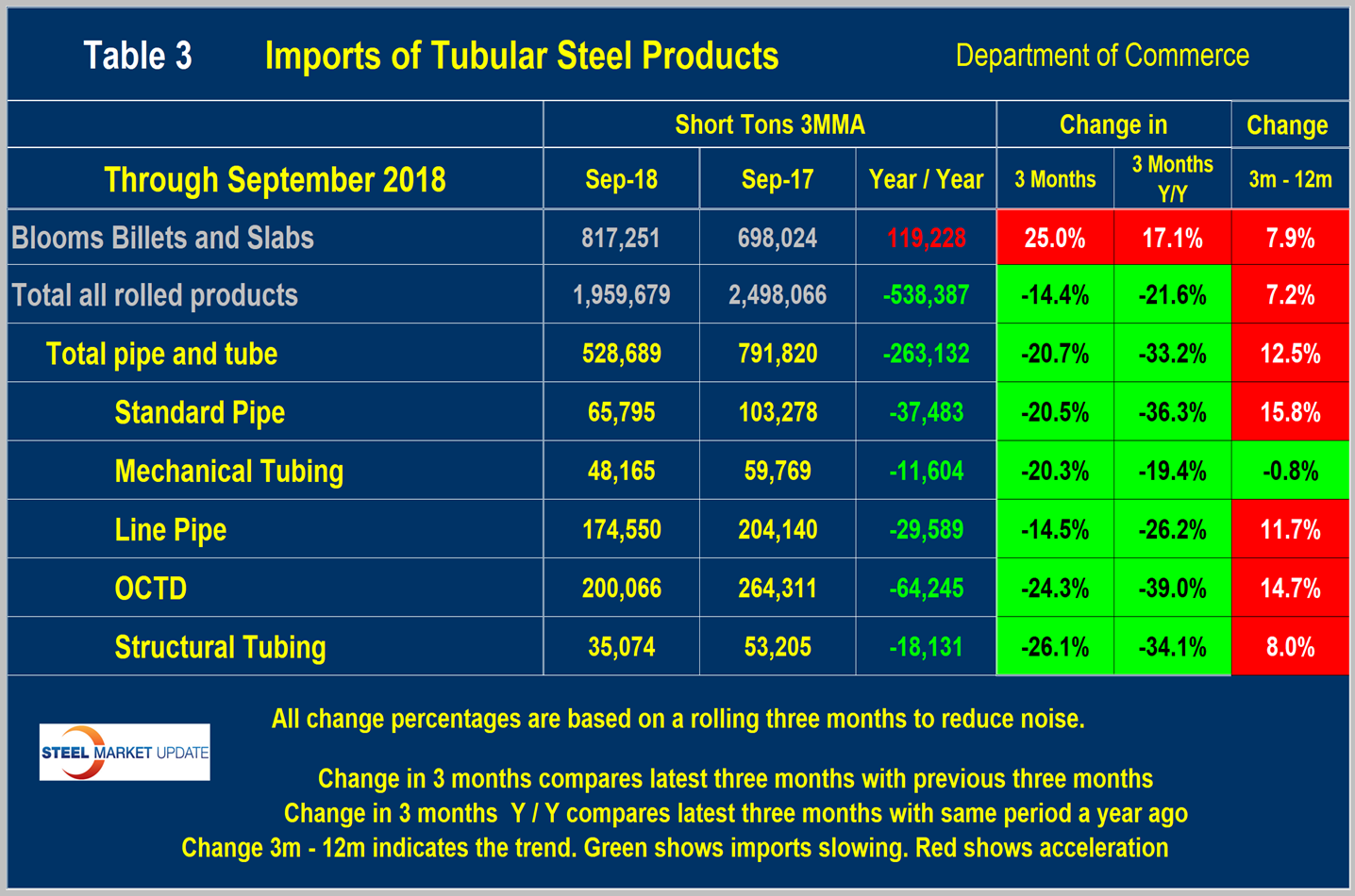
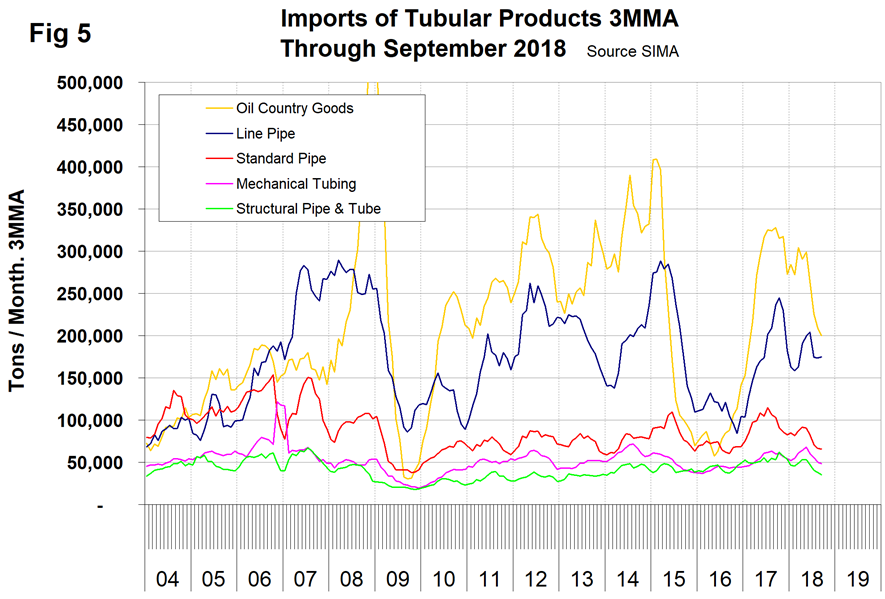
Explanation: SMU publishes several import reports ranging from this very early look using license data to the very detailed analysis of final volumes by product, by district of entry and by source nation, which is available in the premium member section of our website. The early look is based on three-month moving averages using the latest license data, either the preliminary or final data for the previous month and final data for earlier months. We recognize that the license data is subject to revisions, but believe that by combining it with earlier months in this way gives a reasonably accurate assessment of volume trends by product as early as possible. The main issue with the license data is that the month in which the tonnage arrives is not always the same month in which the license was recorded. In 2014, we conducted a 12-month analysis to evaluate the accuracy of the license data compared to final receipts. This analysis showed that the licensed tonnage of all carbon and low alloy products was 2.3 percent less than actual receipts, close enough to confidently include license data in this current update. The discrepancy declined continuously during the 12-month evaluation as a longer period was considered.
Statement from the Department of Commerce: The Steel Import Monitoring and Analysis (SIMA) system of the Department of Commerce collects and publishes data of steel mill product imports. By design, this information gives stakeholders valuable information on steel trade with the United States. This is achieved through two tools: the steel licensing program and the steel import monitor. All steel mill imports into the United States require a license issued by the SIMA office. The SIMA Licensing System is an online system for importers to register, apply for and receive licenses in a timely manner. In addition to managing the licensing system, SIMA publishes near-real-time aggregate data on steel mill imports into the United States. These data incorporate information collected from steel license applications and publicly released Census data. The data are displayed in tables and graphs for users to analyze. Additionally, SIMA provides data on U.S. steel mill exports, as well as imports and exports of select downstream steel products.







